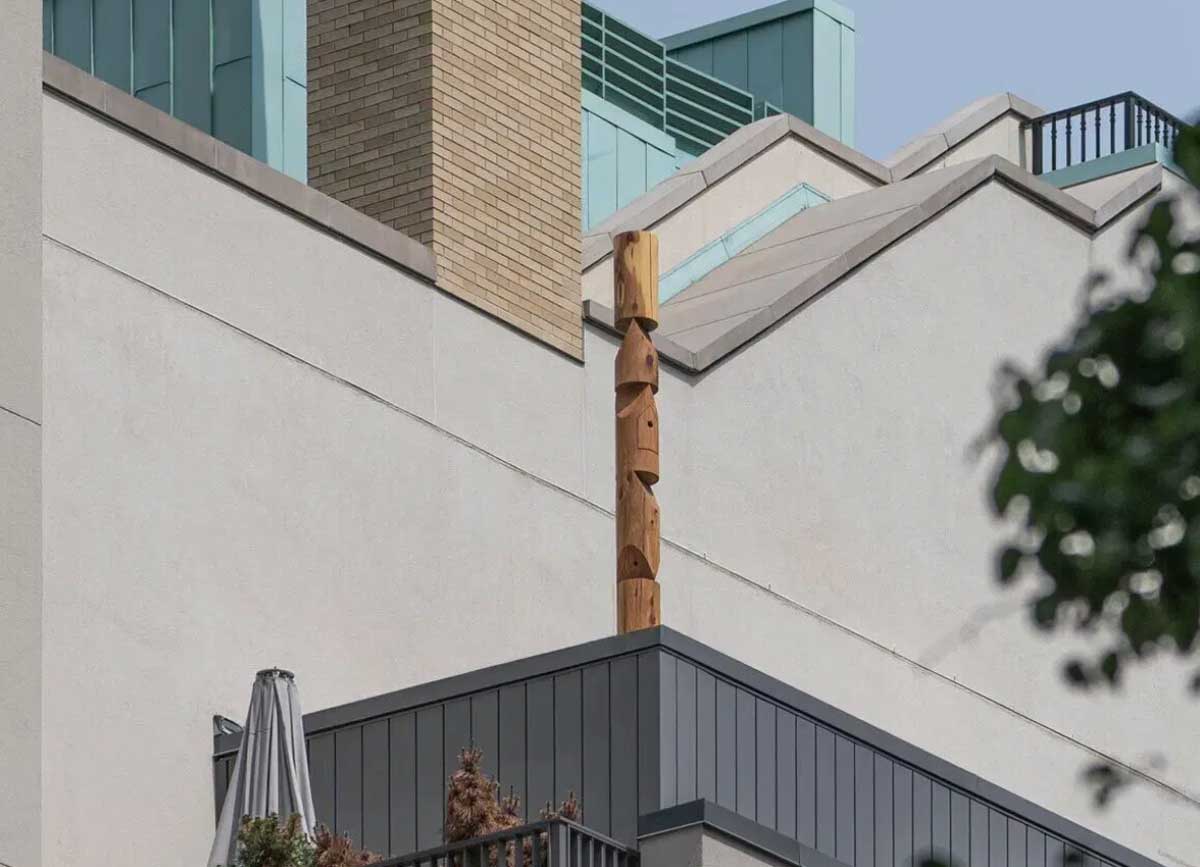The Birdhouse Project with James Leng 2023

The Vilcek Foundation took its appreciation of design to new heights with the installation of a birdhouse designed by architect James Leng on the roof of the foundation’s Manhattan headquarters. The project was conceived in early 2020 by Vilcek Foundation President Rick Kinsel with architect, James Leng. The Chinese-born architect and designer is a co-founding partner of San Francisco-based architecture office Figure, along with Jennifer Ly, with whom he worked jointly on the development of the birdhouse.
“In the spring of 2020, when the COVID-19 health emergency paused production of many art, design, and architecture projects, it was important to me to identify ways that the Vilcek Foundation could partner with immigrant creators in our network to develop projects that could provide artists, architects, and designers with meaningful work and a source of income,” said Kinsel.
“The introspective nature of that period when we were all working from home led me, James, and many others to reconnect with the natural world around us,” said Kinsel. “James and Jennifer at Figure undertook detailed studies of 13 bird species, incorporating environmental considerations including height, wind, exposure, and habitat needs to create a suitable dwelling structure that is aesthetically and conceptually unique.”
Leng and Ly studied bird habitats as designed both by birds and by humans to come up with several initial concepts.
“It was quite a unique opportunity to be asked to design a house for a bird,” said Leng. “In one sense, being the architects that we are, we approached it as if we were designing a house for a client: What would a resident bird want and need in their home? At the same time, we thought that this project really should be about the intertwined stories of wildlife ecology and material ecology; it is as much about the lives of birds and their habitats as it is the life cycles of the materials we use to construct habitats.”
Initial concepts included different designs suited to the needs of different species. Most bird nests fall into a few categories, including solitary cavity nests (single-occupancy enclosed nests with an external entrance); column nests (built in chimney-like spaces); and colony nests (for birds that prefer to share larger dwellings with multiple entrances). Concepts were customized for different potential tenants—from Carolina Wrens to Purple Martins.
The final concept selected would accommodate a solitary cavity nesting bird, like a Carolina Wren, a House Finch, a Common Grackle, or a Great Crested Flycatcher, and makes use of a log of Eastern Cedar (Juniperus virginiana)—a coniferous tree native to New York and the Eastern United States. Working with material experts, Leng and Ly at Figure developed the birdhouse’s final form, infusing the organic material and surface with a uniquely modern sensibility. The final form is a tall narrow column turned from a single log, with deep notches that recall terraced roofs and pediments sculpted into the sides. The birdhouse stands over eight feet in height, with a private entry for a single avian occupant situated approximately six feet off the ground.
In parallel to designing and fabricating the birdhouse itself, Leng noted that the project became a way for him and Ly at Figure to explore the materiality of wood, considering the processes that wood undergoes when becoming a home or a habitat. “The project became a learning tool for us to get closer to material, to work intimately with wood… and to physically participate in the building process,” said Leng. “We learned how to turn wood on the lathe, and produced mockups that started small and got larger and larger until we got to the 1:1 final birdhouse, where we worked closely with an expert craftsman to realize the final form.”
Photo courtesy of Juney Lee.
A digital rendering of the birdhouse placement. Courtesy of James Leng & Jennifer Ly/Figure.
Photo courtesy of James Leng & Jennifer Ly/Figure.
Courtesy of James Leng & Jennifer Ly/Figure.


